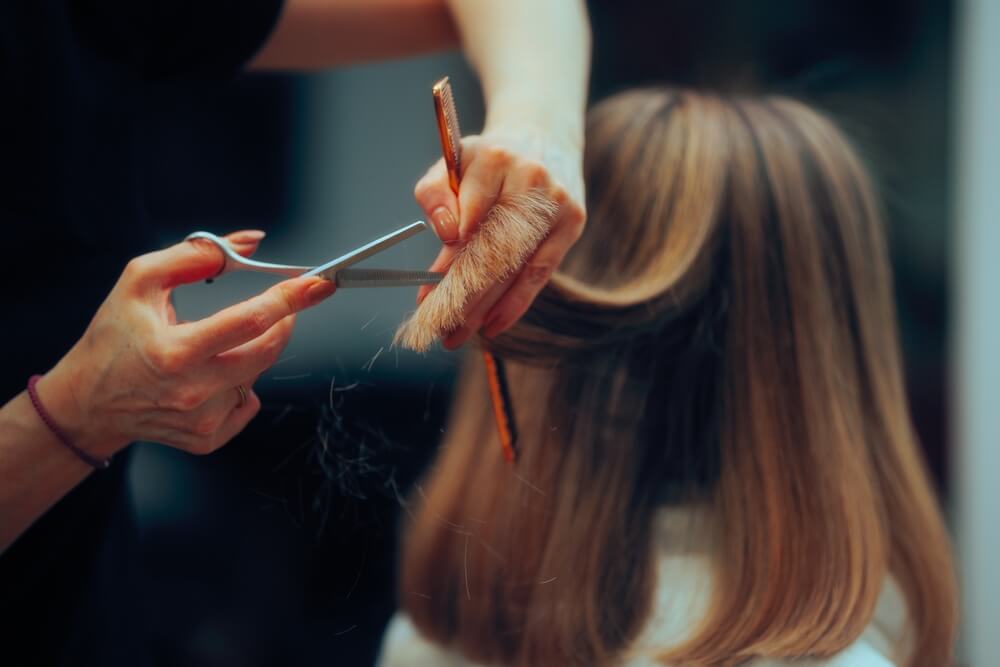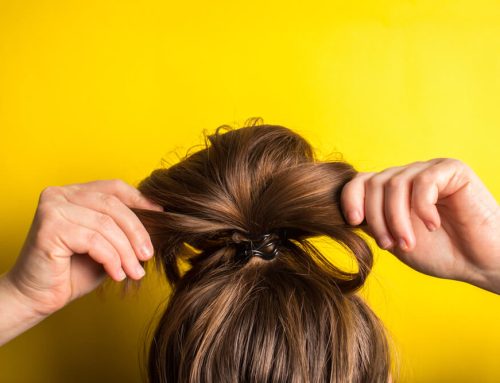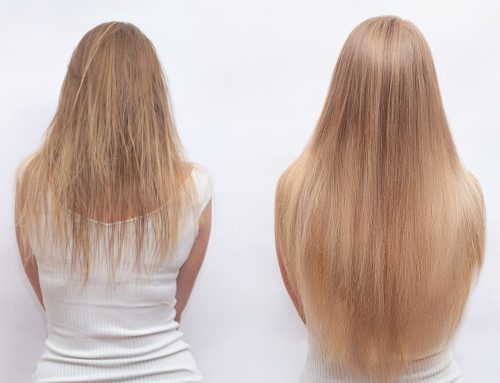Dealing with damaged hair can feel overwhelming. Whether it’s from heat styling, chemical treatments, or environmental factors, damaged hair is often dry, brittle, and prone to breakage. The good news? You can repair your hair and bring it back to life with the right approach. In this guide, we’ll break down some simple steps you can take to restore your hair’s health and shine.
Identify the Damage
The first step to repairing damaged hair is understanding what’s causing the damage. Different types of damage require different treatments, so it’s important to identify the root cause.
Heat Damage
If you frequently use flat irons, curling wands, or blow dryers, heat damage might be to blame. Heat strips your hair of moisture, leaving it dry and brittle.
Chemical Damage
Chemical treatments like coloring, bleaching, perming, or relaxing can weaken your hair’s structure. Over-processing can lead to breakage, split ends, and dryness.
Environmental Damage
The sun, wind, pollution, and even saltwater or chlorine can take a toll on your hair. These factors can strip moisture from your hair and cause it to become fragile.
Once you’ve pinpointed the type of damage, you can begin the repair process.
Trim Your Hair Regularly

It may seem counterproductive if you’re trying to grow your hair out, but regular trims are essential for repairing damaged hair. Split ends can travel up the hair shaft, causing further breakage. Trimming your hair every six to eight weeks helps prevent this.
Switch to a Gentle Shampoo
The shampoo you use can have a huge impact on your hair’s health. Many commercial shampoos contain sulfates and harsh chemicals that strip your hair of its natural oils, leading to dryness and damage.
Look for Sulfate-Free Formulas
Opt for a sulfate-free shampoo that’s gentle on your hair. Sulfates can be too harsh for damaged hair, causing it to become even more brittle and dry. A gentler formula will cleanse your hair without stripping it of moisture.
Don’t Wash Your Hair Too Often
Washing your hair too frequently can strip away its natural oils, leaving it dry. Try to wash your hair only two to three times a week to give it a chance to retain some of its natural moisture. In between washes, use a dry shampoo to keep your hair fresh.
Use a Deep Conditioning Treatment
One of the most effective ways to repair damaged hair is through regular deep conditioning treatments. These treatments infuse your hair with moisture and nutrients, helping to restore its softness and shine.
Choose the Right Deep Conditioner
Look for deep conditioners that contain hydrating ingredients like shea butter, coconut oil, or argan oil. These ingredients help to lock in moisture and repair the damage. For chemically damaged hair, protein treatments can help strengthen the hair shaft.
How to Apply
Use a deep conditioner once a week, applying it to damp hair after shampooing. Focus on the ends, where most of the damage tends to occur. Leave the treatment on for at least 15-30 minutes before rinsing thoroughly.
Protect Your Hair from Heat
Heat styling tools are one of the main culprits behind damaged hair. If you want to repair your hair, limiting your use of heat tools is essential.
Limit Heat Styling
Try to reduce how often you use flat irons, curling irons, or blow dryers. If possible, allow your hair to air dry instead of blow-drying. On days when you do use heat tools, set them to a lower temperature to minimize damage.
Always Use a Heat Protectant
When you do use heat styling tools, always apply a heat protectant spray or serum beforehand. Heat protectants create a barrier between your hair and the heat, reducing the chances of damage.
Hydrate Your Hair from the Inside Out

Healthy hair starts from within. What you eat and drink plays a significant role in the health of your hair.
Drink Plenty of Water
Staying hydrated is key to maintaining healthy hair. Drinking enough water helps keep your scalp and hair hydrated from the inside out, reducing dryness and brittleness.
Eat a Balanced Diet
Your diet should include a variety of vitamins and minerals that support hair health. Foods rich in omega-3 fatty acids, like salmon, walnuts, and flaxseeds, can help keep your hair strong and shiny. Incorporating leafy greens, fruits, and whole grains into your meals can also give your hair the nutrients it needs.
Avoid Overprocessing
If your hair is already damaged, it’s a good idea to avoid further chemical treatments until your hair has had time to recover.
Skip the Hair Dye and Bleach
Dyeing and bleaching can be extremely harsh on already damaged hair. If you can, take a break from coloring your hair and let it heal. If you must dye your hair, opt for ammonia-free formulas or consult a professional to minimize damage.
Avoid Relaxers and Perms
Relaxers and perms can weaken your hair’s structure, making it more prone to breakage. If your hair is damaged, it’s best to steer clear of these treatments until your hair is stronger.
Be Gentle with Wet Hair
Wet hair is more fragile and prone to breakage, so it’s important to handle it with care.
Use a Wide-Tooth Comb
After washing your hair, gently detangle it with a wide-tooth comb. Start at the ends and work your way up to avoid tugging or pulling, which can cause further damage.
Avoid Rubbing Your Hair with a Towel
Instead of rubbing your hair dry with a towel, gently blot it to remove excess water. Better yet, use a microfiber towel or an old cotton T-shirt to dry your hair—these materials are much gentler on your strands.
Sleep on a Silk Pillowcase
Did you know your pillowcase could be contributing to your damaged hair? Cotton pillowcases can create friction while you sleep, leading to tangles and breakage.
Switch to Silk or Satin
Silk or satin pillowcases create less friction, helping to reduce breakage and split ends. They also help your hair retain moisture, so you wake up with smoother, shinier locks.
Patience is Key
Repairing damaged hair doesn’t happen overnight. It takes time and consistency to see results, so be patient and stick with your routine.
Be Consistent
Consistency is crucial when it comes to repairing damaged hair. Stick with your new haircare routine, and over time, you’ll notice your hair becoming stronger, shinier, and healthier.
Final Thoughts
Damaged hair can feel like a challenge, but with the right steps, you can repair it and bring it back to life. From regular trims and deep conditioning treatments to heat protection and gentle handling, there are plenty of ways to restore your hair’s health. Stick with these tips, and soon enough, you’ll be enjoying soft, shiny, and healthy hair again.






Leave A Comment